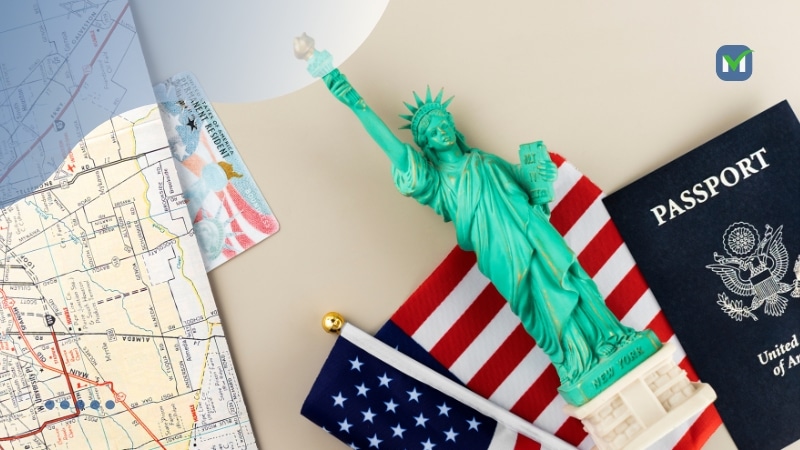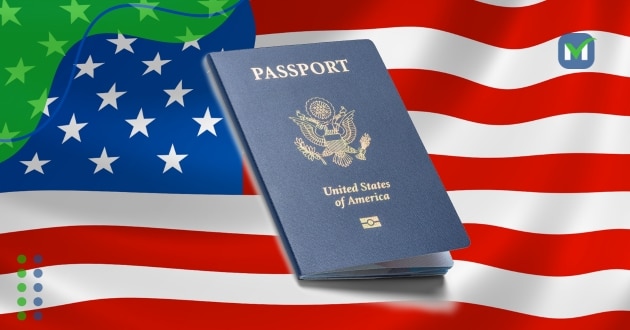Advertisements
Immigration to the United States is the dream of many people, who dream of a safer life, with better salaries and more opportunities.
However, before packing your bags, it is essential to understand all the costs and steps of the immigration process to the United States. Understanding what the real cost of living is. In addition to how the visa process works, how much money to bring and what precautions to take to avoid surprises.
Everything will be explained in this complete guide, where you will know all the details about immigration to the United States, from the types of visas available to how much to save before boarding.
How Much Does It Cost to Live in the USA?

For those who dream of moving to the United States, understanding the real costs of living is indispensable.
Advertisements
Even with the opportunity to earn in dollars, the cost of maintaining a minimally comfortable life can be high.
At first, costs vary depending on the state and city where you intend to live. For example, living in New York or San Francisco can cost twice as much (or more) than living in regions like Texas, North Carolina, or Florida. Let’s look at some costs you should consider.
1. Housing (Immigration to the United States)
Rent is often the biggest expense for those living in the U.S.
Advertisements
In more expensive cities, such as Los Angeles or Boston, rent for a one-bedroom apartment can exceed $2,000 per month. In more affordable cities, such as Orlando or Houston, the cost drops, reaching up to US$ 1,200.00.
Many immigrants choose to share a home with other people or rent rooms in houses that are already occupied—which can reduce that cost to $500 to $900 a month.
2. Food
Eating out in the U.S. can be tempting, but it’s expensive in the long run. As a rule, a simple meal in a restaurant costs an average of US$ 15.00 to US$ 20.00 per person.
Therefore, the market is the best option. Since you can spend much less, around US$ 300.00 to US$ 600.00 per person.
3. Transportation (Immigration to the United States)
In the U.S. you’ll need a car for just about everything.
And that entails spending on purchase, insurance ($100 to $250 a month), gasoline ($3 to $4 a gallon), maintenance, and annual registration.
Cities with efficient public transportation, such as New York or Chicago, are an exception — and the subway, in these cases, can cost around $127 per month with the unlimited monthly pass.
There will still be other expenses, for example:
- Mobile phone with internet: between US$ 30.00 and US$ 70.00 per line
- Residential Internet: about US$50.00 to US$100.00
- Energy, water, gas and garbage: from US$ 150.00 to US$ 300.00.
For a single person, the monthly cost of living in a mid-cost city is around $2,000 to $2,800.
Step by step to do immigration to the United States the right way

Let’s now look at exactly everything you need to do: get to live in the United States. Let’s go.
1. Find out which type of visa is best for you
Getting a U.S. visa takes time. Most require the applicant to have a sponsor, i.e., an employer in the United States willing to formally hire and begin the process with the government. See the main visas of interest:
- H-2B: For temporary non-agricultural workers, such as those in construction and health care
- H-2A: intended for seasonal agricultural workers.
- EB-3: Permanent immigration visa for skilled, unskilled, or professional workers;
- J-1: Serves for exchange, as an au pair, trainees or paid internships.
- O-1: For people with skills in arts, sciences, or sports;
- Tourist visa (B-2): It does not allow you to work, but it is good for those who just plan to visit the North American tourist attractions. It is worth mentioning that working with a tourist visa is illegal and can lead to expropriation.
We recommend that you seek a lawyer specializing in American visas to file the application in the right way. For more information about each visa, visit U.S Immigration Support.
2. How much money to bring to the USA?
You must gather a good financial reserve before embarking. Even if you go with an approved work visa, the first few months can be challenging until the routine is organized.
Therefore, it is recommended to take between US$ 3,000 and US$ 7,000, depending on whether you go alone or with your family.
This amount should cover:
- Airfare;
- Visa costs and document translations;
- Rent deposit (usually 2 months in advance);
- Feeding;
- Transport;
- Initial health insurance (if the employer does not provide it immediately);
- Expenses until you receive your first salary.
In addition, it is important to avoid superfluous expenses in the first few months and focus on setting up an emergency reserve for unforeseen events.
Thinking about saving the amount you will need to immigrate, we recommend that you put the amount you keep in an account or in the best low risk investments, where your money will be yielding and helping you to get closer to your goals.
Is it worth immigrating to the United States?
As we come to the end of this reading, it is natural that the main question we have is; is it really worth immigrating to the United States?
The answer is it totally depends on who you are, what you are looking for and how much you are willing to prepare.
On the one hand, you can live in a country where you earn in dollars, with the possibility of increasing your purchasing power.
However, the other side of the coin cannot be ignored. The cost of living in American cities is high. Especially with regard to housing and health.
Without planning, what seemed like an opportunity can quickly become a burden. In addition, the legal immigration process is complicated, expensive, and time-consuming.
There are still language and cultural barriers and the real risk of underemployment at the beginning, especially if you do not master English or arrive without a professional qualification.
The truth is that immigrating is not running away from life, but facing a new reality. And this new reality requires preparation.
Therefore, more than following a dream, it is necessary to put together a plan; understand the laws, save money, research destinations, qualify and reflect honestly on one’s own motivations.





